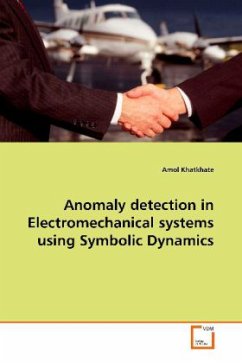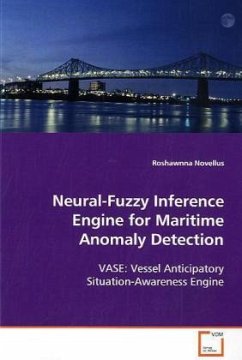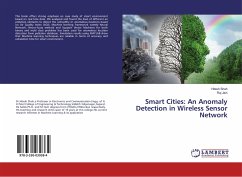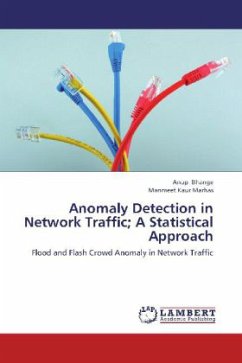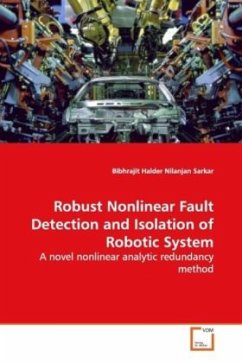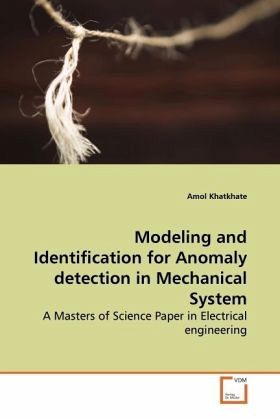
Modeling and Identification for Anomaly detection in Mechanical System
A Masters of Science Paper in Electrical engineering
Versandkostenfrei!
Versandfertig in 6-10 Tagen
43,10 €
inkl. MwSt.

PAYBACK Punkte
22 °P sammeln!
The main objective of the work reported in thismonograph is the fabrication of an experimentalapparatus to detect slowly evolving anomalies (i.e.,decrease in stiffness due to fatigue failure)in complex mechanical systems at an early stage byobserving time series data of the availableultrasonic and performance measuring sensors. Theinformation on evolving anomaly will serve as aninput to the life extending control policy that will,in turn, generate corrective actions to mitigatefatigue crack damage in the specimen structures andthereby extend the remaining life of the systemwithout any signific...
The main objective of the work reported in this
monograph is the fabrication of an experimental
apparatus to detect slowly evolving anomalies (i.e.,
decrease in stiffness due to fatigue failure)
in complex mechanical systems at an early stage by
observing time series data of the available
ultrasonic and performance measuring sensors. The
information on evolving anomaly will serve as an
input to the life extending control policy that will,
in turn, generate corrective actions to mitigate
fatigue crack damage in the specimen structures and
thereby extend the remaining life of the system
without any significant loss in performance.
The monograph presents the design requirements for
the experimental testbed. Physical modeling gives out
the expected resonant frequencies. Finally, system
identification presents the actual resonant
frequencies achieved from the setup and compares the
same with the theoretical physical model. The
monograph discusses the proximity of the resonant
frequencies achieved through physical modeling and
system identification and presents conclusions on the
same.
monograph is the fabrication of an experimental
apparatus to detect slowly evolving anomalies (i.e.,
decrease in stiffness due to fatigue failure)
in complex mechanical systems at an early stage by
observing time series data of the available
ultrasonic and performance measuring sensors. The
information on evolving anomaly will serve as an
input to the life extending control policy that will,
in turn, generate corrective actions to mitigate
fatigue crack damage in the specimen structures and
thereby extend the remaining life of the system
without any significant loss in performance.
The monograph presents the design requirements for
the experimental testbed. Physical modeling gives out
the expected resonant frequencies. Finally, system
identification presents the actual resonant
frequencies achieved from the setup and compares the
same with the theoretical physical model. The
monograph discusses the proximity of the resonant
frequencies achieved through physical modeling and
system identification and presents conclusions on the
same.



